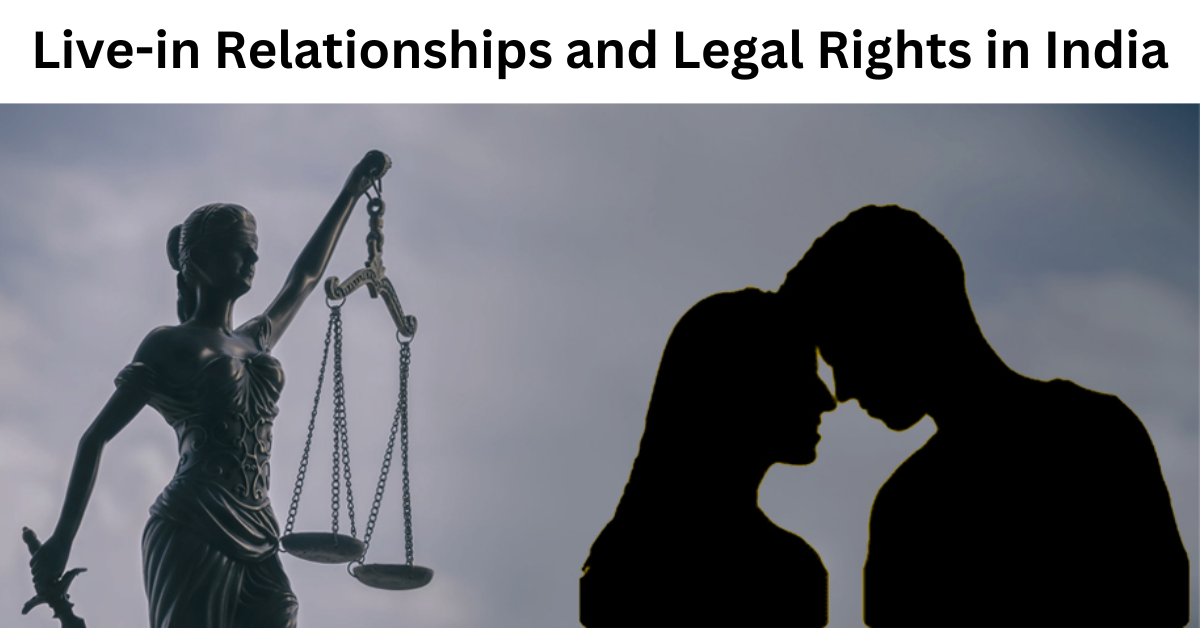In India, the concept of live-in relationships, where two individuals choose to live together without formal marriage, has evolved significantly over the past few decades. While traditionally, marriage was seen as the only accepted way to cohabit, the changing social fabric has led to a greater acceptance of live-in relationships. However, despite this growing acceptance, there are still many legal complexities and challenges surrounding the rights of individuals in such relationships.
This blog explores the legal rights of individuals involved in live-in relationships in India, drawing insights from court judgments, laws, and prevailing societal norms.
What is a Live-in Relationship?
A live-in relationship is an arrangement where two people, who are not married, choose to live together and share a domestic life, typically with a romantic or sexual relationship. Unlike marriage, there is no legal contract binding the two parties to one another, though the cohabitation may be long-term or short-term. While live-in relationships are common in many parts of the world, the legal framework for such relationships varies from country to country, and India is no exception.
Legal Status of Live-in Relationships in India
In India, live-in relationships are not explicitly recognized as a legal institution. However, over the years, the judiciary has recognized certain rights for individuals in live-in relationships, especially when it comes to issues like maintenance, inheritance, and domestic violence. These rights have been established to provide protection for individuals, especially women, in such relationships, ensuring they are not left without recourse in times of need.
Key Legal Rights in Live-in Relationships
1. Right to Maintenance under Section 125 of the Criminal Procedure Code
One of the most significant legal protections available to individuals in a live-in relationship is the right to maintenance. Under Section 125 of the Criminal Procedure Code (CrPC), an individual, primarily the woman, in a live-in relationship can seek maintenance from their partner if they separate. The law is intended to ensure that women, especially those who may have been financially dependent on their partner during the relationship, are not left destitute. In the landmark case of Indra Sarma v. V.K.V. Sarma (2013), the Supreme Court recognized that women in live-in relationships could seek maintenance under this section, much like married women.
2. Protection Against Domestic Violence
In 2005, the Protection of Women from Domestic Violence Act (PWDVA) was enacted to protect women from domestic violence, and it extends its protection to women in live-in relationships as well. In Khushboo v. Kanniammal (2010), the Supreme Court held that a woman in a live-in relationship is entitled to the same protection under the Domestic Violence Act as a legally married woman. If the woman in a live-in relationship faces physical, mental, or emotional abuse, she can file a complaint under this Act and seek relief.
3. Inheritance Rights
While live-in relationships do not provide automatic inheritance rights as marriage does, certain judgments have addressed this issue. In the case of Badri Prasad v. Dy. Director of Consolidation (1978), the Supreme Court acknowledged that a child born out of a live-in relationship has the right to inherit property from both the mother and the father, provided the child is recognized as legitimate. This judgment has been significant in protecting the rights of children born in live-in relationships.
4. Recognition of Children Born in Live-in Relationships
Children born out of live-in relationships are recognized as legitimate under Indian law. The legitimacy of the child is not questioned just because the parents were not married. This was further affirmed in the case of Raghunath v. Raghunath (2017), where the court ruled that children from live-in relationships should not be treated differently from children born out of wedlock when it comes to inheritance and legal protection.
5. Property Rights
The issue of property rights in live-in relationships is complex, as there is no legal provision similar to a marriage contract that automatically grants property rights to a partner in a live-in arrangement. However, in some cases, the courts have granted property rights or compensation in the event of a breakup. For instance, if a woman has contributed to the acquisition or maintenance of property during the live-in relationship, she may claim her share of it upon separation.
6. Legal Protection of Relationship Rights
While live-in relationships are not legally recognized as marriages, there have been instances where the courts have provided legal protection for the rights of the individuals involved. The Supreme Court in the case of S. Khushboo v. Kanniammal (2010) held that a live-in relationship is not a criminal offense and that the right to live with a person of one’s choice falls under the right to personal liberty under Article 21 of the Constitution of India.
Challenges and Limitations
Despite the growing legal recognition of live-in relationships, there are still several challenges. One of the main limitations is the lack of a comprehensive law regulating live-in relationships, which leads to ambiguity in many cases. The absence of formal marriage contracts often results in disputes over property rights and maintenance.
Additionally, social acceptance of live-in relationships remains limited in many parts of India, where conservative views on relationships and marriage persist. This can lead to difficulties for individuals in such relationships, especially women, who may face societal stigma or discrimination.
Judicial Approach to Live-in Relationships
Over the years, the Indian judiciary has gradually acknowledged live-in relationships and their complexities. Several landmark judgments have recognized the rights of individuals involved in live-in relationships and extended the same legal protections that married couples enjoy. The courts have ruled that live-in relationships cannot be considered illegal, and in certain cases, individuals have been granted relief similar to that in a formal marriage.
For instance, in the case of Lata Singh v. State of Uttar Pradesh (2006), the Supreme Court affirmed the validity of live-in relationships and emphasized that a woman has the right to choose her partner without facing any societal or legal consequences.
Conclusion
While live-in relationships are not yet formally recognized in Indian law as an alternative to marriage, the legal rights and protections available to individuals in such relationships have gradually evolved. Laws related to maintenance, domestic violence protection, inheritance, and the legitimacy of children born in such relationships have provided a legal framework to ensure that individuals are not left vulnerable when a live-in relationship ends.
However, there is still a need for a more comprehensive legal approach to address the complexities surrounding live-in relationships in India. As societal acceptance of such relationships continues to grow, it is expected that legal reforms will further protect the rights of individuals in live-in relationships and provide greater clarity in this area.

